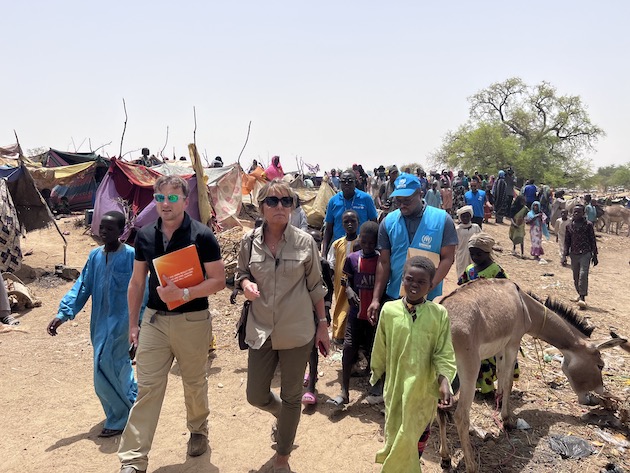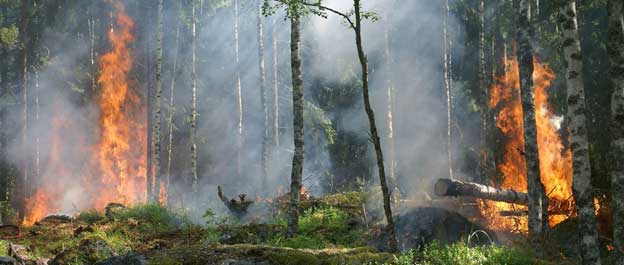Financing Biggest Hurdle to Providing Children with Quality Education in Crisis Situations ECW — Global Issues
UNITED NATIONS, Jul 20 (IPS) – If you want lasting peace, the best investment you can make is in education, said Education Cannot Wait’s Executive Director Yasmine Sherif in an exclusive interview with IPS.
“(This will) make children and adolescents literate, learn critical thinking, address trauma and psycho-social challenges from being victims of a conflict or crisis, develop their potential, and become financially independent,” Sherif said, adding that these were critical skills to participate in good governance of their countries in the future.
She was speaking to IPS ahead of her participation in the ECOSOC High-Level Political Forum side event “Ensuring Education Continuity: The Roles of Education in Emergencies, Protracted Crises and Building Peace” at the UN Headquarters in New York.
Education is the answer to breaking the vicious circle of violence, conflict, and crisis – while this often is associated with war and conflict, the same applies to climate change.
“If the next generation that is today suffering from climate-induced disasters are not educated, do not understand or have an awareness of how to treat mother earth, and do not have the knowledge or skills to mitigate or prevent risks in the future, the negative impact of climate-induced disasters will only escalate.”
Unfortunately, conflicts and climate risks increasingly combine to multiply vulnerability, she said – and instead of declining, the number of children who need urgent support is increasing.
“Today, 224 million crisis-affected children do not receive a quality, continuous education. More than half of these children – 127 million – may have access to something that resembles a classroom, but they are not learning anything. They are not achieving the minimum proficiencies outlined in the Sustainable Development Goals (SDG4).”
Sherif stressed the crucial linkage between education and protection for children in crisis-affected countries and explained how protection is a core component of the holistic package of education ECW is supporting together with its partners.
“On the legal side, we advocate for the respect of the international humanitarian law, national human rights law, and the National Refugee Law, and for an end to impunity for those who violate these,” said Sherif. “We also call for additional countries to adopt the Safe Schools Declaration, and actively support its implementation at the national level.”
To prevent violence around and in schools, practical measures are included to ensure the children are safe.
“It’s important to ensure safe transport to and from the school. And that would, of course, bring a sense of safety to the parents, who may not be willing to send the girls to school because of that. You ensure the infrastructure of the school provides protection. You may need wards around the school so that nobody can walk into the school and abduct a girl.”
ECW funding also includes protections to prevent sexual and psychological violence.
“All the funding that we invest requires giving protection a priority. And that is essential wherever you operate or invest funding in a country of affected by armed conflict; you need to ensure protection is prioritized.”
Sherif said that in countries like Afghanistan, where the Taliban have banned girls from attending secondary school and upwards, ECW works with local partners to support non-formal education.
“There is a lot of work at the community level, with local authorities allowing ECW’s investments in civil society and UN agencies to continue to operate. So community-based schooling is pretty much (being) run now, where we are investing at the community level,” she said, and while it may not be ideal, it does work.
Likewise, non-formal learning centers have been set up in Cox’s Bazar, where the Rohingya refugees live after fleeing violence, discrimination, and persecution in Myanmar.
“Our aim is for every child to be able to access national education systems, but sometimes it is not possible politically or physically due to the dangers of the conflict. So we also support our partners to establish non-formal learning centers until another more sustainable solution can be found.”
During the Covid-19 pandemic, ECW’s partners were innovative in ensuring education continued – with remote learning programmes such as radio and TV-based education, where IT connections were available through phones and WhatsApp with learning kits and tools.
“Home-based, going from door-to-door, that was how it was done during COVID. There was some creativity and innovation. It is possible. It is not ideal, but it is possible.”
Sherif said ECW had developed a proven model to bring quality education to every child – even in the most challenging crisis-affected contexts of war and conflicts – but that the biggest hindrance is the financing.
“If we had the financing, we could reach the 224 million (children) immediately. So financing is the big hindrance today. While peace is the number one (solution), if peace is not possible, education cannot wait.”
“If financing for education is provided in crisis and climate disasters, ECW can reach 20 million children and adolescents in the coming four years. And that requires about another USD700 million for Education Cannot Wait between today and 2026. Just USD 700 million is a small amount when you consider the return on investment you get when you invest in human potential.”
IPS UN Bureau Report
Follow @IPSNewsUNBureau
Follow IPS News UN Bureau on Instagram
© Inter Press Service (2023) — All Rights ReservedOriginal source: Inter Press Service
Check out our Latest News and Follow us at Facebook
Original Source







